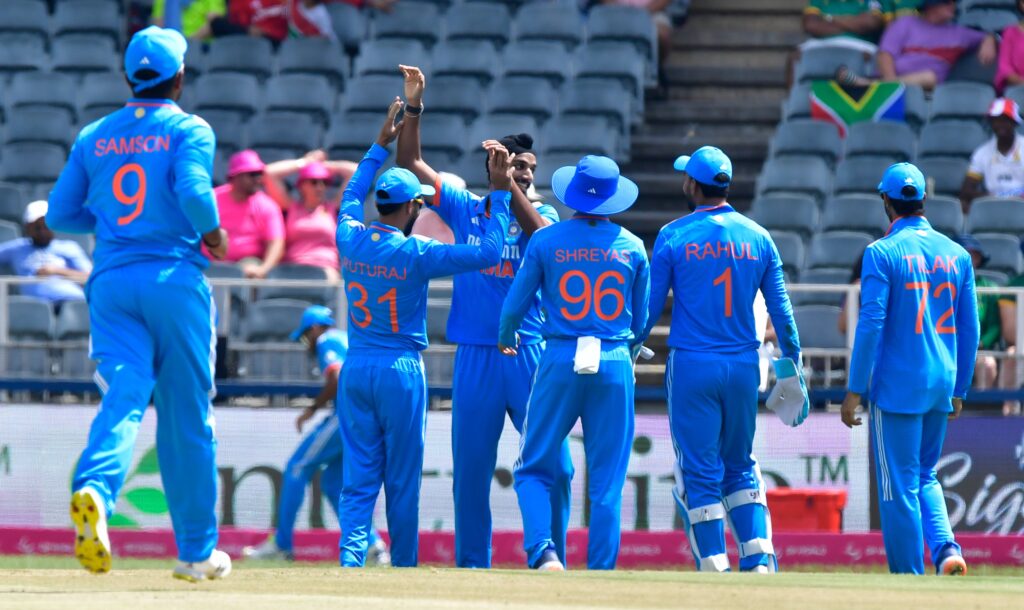
India secured a resounding victory against South Africa in the first ODI. Both Arshdeep Singh and Avesh Khan bowled well. KL Rahul was spot-on with his bowling changes. It is always good to start an away series with a win and South Africa is no easy country to win in.
Having said that, something doesn’t seem right. Bilateral ODI 50-over cricket in the immediate aftermath of the World Cup just doesn’t work. Neither side is at full strength. There is no real end goal in sight. The context, if we may say so, is missing. And India have won many a bilateral series in the past, but failed to win when it really mattered. So while a win is always a box tick, this ODI series isn’t one to really write home about.
To take the readers back a little. It came as a surprise to many that Cricket South Africa decided to withdraw from their scheduled ODI series engagement against Australia in January 2023, preferring to prioritise their own domestic T-20 league instead. The move, a first of sorts, prompted a serious rethink about the future of bilateral contests with financial insecurities plaguing multiple cricket boards going forward.
Except for India and to a degree Cricket Australia and the England and Wales Cricket Board, almost every board was severely impacted by the Covid pandemic. Some had to shed staff, while others had to cut down on expenses. And the response from most is to latch on to the T-20 cash cow and launch and strengthen their own T-20 leagues emulating the IPL.
Viable or not, this is the way forward. Sponsors have queued up to support these leagues in most cases and with international stars looking to turn free agents (some already have), it is expected that these leagues will mount a serious challenge for the bilateral international contests. And now, when the T-20 World Cup in the US and the Caribbean islands is just six months away, that’s the format of relevance. Not 50-over fisticuffs.
In the absence of a 50-over World Cup in the immediate future, this India-South Africa series is somewhat devoid of context. So, when we celebrate Arshdeep and Avesh, the truth is these three games are just going to make up the numbers for the BCCI and CSA.
IND vs SA | Post Match Show: India win the 1st ODI by a thumping margin https://t.co/WkNFOK03p5
— Boria Majumdar (@BoriaMajumdar) December 17, 2023
The T-20s have context given that the World Cup is just months away, but the same can’t be said of the 50-over series. However much the ICC may introduce qualification points and monetary considerations, practical requirements will always outweigh anything else in importance and significance.
With franchise leagues the future, the way ahead for the 50-over format is clear. While the World Cups and Champions Trophies will remain significant, bilateral series will sooner than later cede ground to domestic T-20 leagues.
Consider the following. If the BCCI is given a choice to extend the IPL for another 15 days as against a bilateral series involving six 50-over games in the same window, what would it prefer? Fifteen IPL games in 15 days, against six 50-over games against one particular international team? The answer is a potential knockout. And it is time world cricket accepts the challenge and braces itself for it.
The biggest casualty going forward has to be the 50-over bilateral format. While the T-20s still have economic relevance, the ODI format is neither here nor there. With Test cricket still the jewel for the purist, the new age fan will prefer T-20 domestic leagues to international 50-over engagements any day. That’s where it starts to get interesting for the ICC and the respective boards. Will they continue with these series in the long term or rethink the whole game in view of the fast evolving scenario?
One final point is of real importance here. To see and use the success of the 2023 50-over World Cup in India as an index to justify the popularity of the format will be to miss the trees for the woods.
Firstly, this World Cup was played in India. The cricket market is forever vibrant in this part of the world. Second, India had a real chance of winning on home soil. Most importantly, it was a multi-nation World Cup, which has serious relevance for the cricket fan.
The World Cup, as a result, will surely be successful. But it just doesn’t prove that the 50-over format will continue to have takers. In the hierarchy of formats, if we can call it as such, the domestic T-20 leagues will come second to international contests in the pecking order.
Some, like the IPL, are more lucrative than even the World Cups and this is now a given. It is therefore fairly safe to predict that world cricket will see considerable turmoil in the years to come and unless some serious rethinking is undertaken, 50-over bilateral engagements could soon be a thing of the past.
For All Latest Sports News: CLICK HERE



